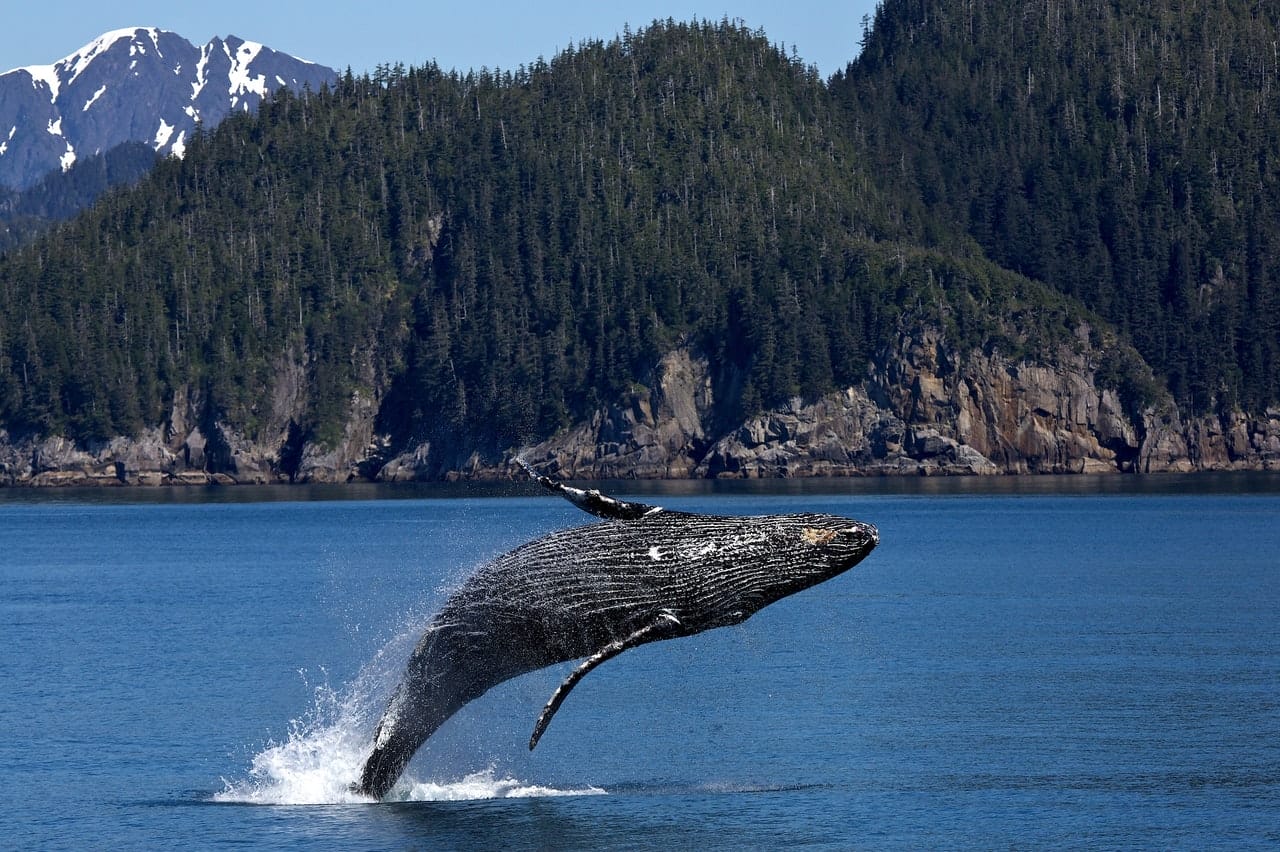Skyline Hawaii on North Pacific Whales migration to Hawaii. Our tours offer the best opportunities to see the sea life off the coast of Kona, Hawaii.
Beyond escaping the chilly cold there is another reason why many people visit the state of Hawaii during the winter. Humpback Whales Season!
Migrating
North Pacific Humpback Whales (Kohola) arrive in Hawaii after their journey from Alaska sometime from November to May, with most sightings January to March, making February the peak time. The more than 3,000-mile journey is believed to take as little as 36 days up to 4-6 weeks one-way. Marine scientists have noted that they typically travel between 3-7 miles per hour, with very few stops.
Mating and Birthing
Humpback Whales leave the icy waters of Alaska during the fall for warmer waters to mate, give birth, and nurture their calves. Not only does Hawaii offer warmer waters but a few other perks could be the underwater visibility, the variety of ocean depths, and the lack of natural predators. They have an 11 to 12-month gestational period, so baby Humpback calves are both conceived and birthed in Hawaii. So, it is safe to assume that last season’s breeding, becomes the following season’s birthing. During their time spent in Hawaiian waters, baby calves will learn the motor skills that are necessary for survival. These early learned behavioral skills will translate into the adult behaviors that will ensure their safety and livelihood for the long migration back to Alaska.
Whale Watching
Maui is without a doubt the best island for whale watching from the shoreline. You can watch them from the beach, your resort/lanai, or from a scenic lookout. The most common road to see the whales breaching and playing from a distance is between Ma’alaea and Lahaina of Highway 30. You can also leave the land and set out on the water for a closer look. There are plenty of boating tours to choose from or you can choose your favorite paddle sport (kayak, canoe, SUP).
North Pacific Humpback Whales Facts:
- The North Pacific Humpback Whale population has grown from approximately 1,400 in 1966 to 21,000 in 2014
- Average of 8,000-10,000 Humpback Whales visit Hawaii every year
- 5th largest whale species in the world (weigh 50-80k lbs and up to 60-feet in length)
- Life span is about 50-years
- Consumes up to 3,000-lbs of food per day (but never feed in Hawaii’s oceans)
- Polygynous mammals and are promiscuous breeders
- Males do not play a parental role in the early life of calves but they will protect and guard the female during their stay in Hawaii
Plan your vacation to Hawaii in the winter and be sure to get out on the water to view these amazing mammals.














